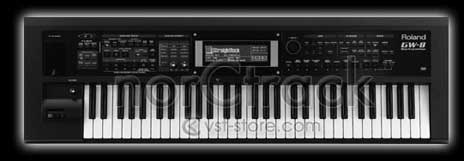Roland Gw 8 Styles Free Download

Style Converter & Playlist Editor Bundled with each GW-8 is Roland's Style Converter software for PC, which lets you convert your own MIDI data into GW-8 backing styles via commercially available USB Flash memory devices. Also included is the Playlist Editor for customizing the order of songs. Apr 30, 2018 - Download Roland Styles free from uploadedtrend.com file search engine. Easy for use File Search Engine. Roland gw8 style - free search.
GW-8 Updates & Drivers • This is the latest version of operating system for the GW-8. After downloading and extracting the compressed file, please refer to the “GW8_Ver200_Readme” pdf document included for the update procedure. • This is the GW-8 driver for Microsoft(R) Windows(R) 8 64-bit Edition / 32-bit Edition. This driver is able to be used for the AX-Synth Shoulder Synthesizer, too.
• This is the GW-8 driver for Microsoft(R) Windows(R) 7 64-bit Edition. This driver is able to be used for the AX-Synth Shoulder Synthesizer, too.
How: 1) Maps you can get via CBPlay. Gameboxes as of December 1, most recent are listed first. Almost all are available at Limey-Yank Games: rkrosaries.com want to wait, it is still possible to extract the images from a Cyberboard gamebox. Kichiku megane r cg set part2 download.
• This is the GW-8 driver for Microsoft(R) Windows(R) 7 32-bit Edition. This driver is able to be used for the AX-Synth Shoulder Synthesizer, too. • The Roland GW-8 USB driver for Microsoft(R) Windows Vista(R). This driver is able to be used for the AX-Synth Shoulder Synthesizer too. • The Roland GW-8 USB driver for Microsoft(R) Windows(R) XP Home Edition/Professional This driver is able to be used for the AX-Synth Shoulder Synthesizer too.
The bright, jangling tones of an acoustic guitar fit in with almost any instrument, sound beautiful on their own and are a perfect accompaniment for the human voice. But where did it come from, and how do you know which is right for you? Musician's Friend has a wide assortment from the biggest acoustic guitar makers around as well as smaller, more niche brands. We've got everything from affordable entry-level starter packs for younger players to highly detailed one-off guitars for gigging professionals and collectors.
Mimio studio s klyuchom. The Mimio Screen Annotation mode allows you to use your Mimio Tools with any application outside of MimioStudio Notebook including: web pages, PowerPoint presentations, Word and PDF documents,. This is the first installment in a series of three videos using some new graph activities that are perfect for the beginning of the year in elementary school. Mimio Studio, a software developed by mimio, often gets into your computer via Webpage browse or some freeware’s installation. To safely remove the program, the wrong way is to locate its folder, right-click it and select “Delete”, while quite a number of people are still doing this.
A Brief History of the Acoustic Guitar You may be surprised to know the acoustic guitar's roots go back to Ancient Egyptian. A lute was a hollow-bodied wood instrument with multiple strings attached to a soundboard via a thin piece of wood (the bridge).
The strings were stretched in a parallel fashion across a soundhole, and wound taut to a peg or post (tuners) atop the neck. The tension of each string was adjusted to create a pattern of frequencies familiar to those who played it. The lute had a teardrop-shaped soundboard, bowl-shaped body and a sharp bend in the neck. A lutist, much like today's guitarist, strummed or plucked the strings with their fingers or a plectrum (what we call a pick). The sound produced was created by the air being moved around the string vibrations, the vibrations coming off the soundboard, and the air resonating back out from the body chamber through a soundhole. Fingers on the 'neck' hand change the pitch of a string by pressing it firmly against specific spots along the neck top (fingerboard). Though the lute was used through the Baroque era, the inspiration for the name 'guitar' showed up back in 13th century Western Europe with the 'gittern.'

Similar in design to the lute, its body was carved out of a single piece of wood and had a smooth or straight neck joint. In the 15th century, Spain introduced the vihuela, a flat-backed, peanut-shaped design with a less pronounced neck bend and pairs of strings tuned in unison. Roughly 350 years later, Spanish-born guitar maker Antonio Torres Jurado created a larger body design and introduced fan bracing for internal reinforcement. This made what we now call the nylon-string, Spanish or classical guitar, louder with better projection and a cleaner tone. In 1916, C.F.
Martin & Company developed the square-shoulder dreadnought acoustic guitar. Named for the large battleships of the time, it was wider, deeper and yielded more volume, with a rich, well-rounded tone. Popular with the folk and bluegrass guitarists of the time, it is still the best-selling acoustic guitar shape today. Around that same time, banjo and violin manufacturers experimented with telephone transmitters to amplify the vibrations of the soundboard so guitars could be heard over the louder brass and drum sections of the era's big band setup. As technology evolved, piezoelectric transducers or condenser microphones became the norm for 'picking up' the vibrations of the acoustic soundboard.